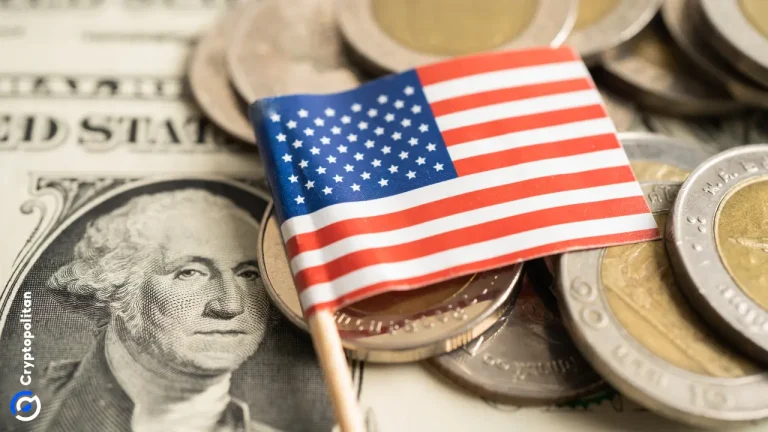Key Takeaways
- The Federal Reserve is set to resume asset purchases early next year, marking a shift from its three-year quantitative tightening (QT) program.
- This move aims to alleviate investor concerns regarding U.S. government financing challenges and stabilize financial markets.
- Analysts anticipate the Fed will begin buying Treasuries again in the first quarter, potentially expanding its balance sheet to over $4.2 trillion.
- Market anxiety over supply pressures has eased, partly due to strong tariff revenues and the expectation of Fed intervention.
- The Fed’s objective is to ensure sufficient reserves for effective policy implementation, rather than aggressively boosting liquidity as in past quantitative easing phases.
Federal Reserve to Pivot from Quantitative Tightening to Asset Purchases
The Federal Reserve is preparing to re-engage in asset purchases early in the upcoming year. This strategic shift follows the conclusion of its three-year quantitative tightening (QT) program, signaling a return to being a significant buyer of U.S. Treasuries.
Federal Reserve Chair Jerome Powell indicated the need for reserves to gradually growing to keep up with the size of the banking system and the size of the economy. This suggests a proactive approach to manage liquidity and support economic stability.
Marco Casiraghi of Evercore ISI further elaborated, forecasting that the Fed would recommence Treasury purchases in the first quarter of next year, with a goal to expand its balance sheet by March at the latest.
The Fed’s QT initiative, launched in 2022, was designed to shrink the central bank’s holdings of Treasury and mortgage-backed securities acquired during the pandemic-era quantitative easing. This process has steadily reduced the Fed’s asset portfolio since its peak.
💡 A substantial portion of the QT observed thus far has involved the reduction of excess cash held by firms in the reverse repo facility. This facility, which peaked at $2.6 trillion in late 2022, is now experiencing minimal activity.
Moving forward, the Fed’s balance sheet is expected to be considerably larger than the $4.2 trillion figure recorded at the onset of the COVID-19 pandemic.
Eased Market Anxiety Amidst Shifting Fed Policy
Casiraghi projects that the Fed will acquire approximately $35 billion in Treasuries monthly, contributing to a $20 billion monthly expansion of its $6.6 trillion balance sheet. Additionally, the Fed is expected to reduce its holdings of mortgage-backed securities.
These forthcoming actions are intended to bolster investor confidence, particularly among those concerned about the U.S. government’s debt sustainability. Early indicators suggest a calming of market nerves, with traders anticipating the end of the Fed’s QT program. Fund managers also appear optimistic about a potential reduction in the U.S. deficit, which currently stands at 6% of GDP.
✅ Mark Cabana, head of U.S. rates strategy at Bank of America, observed that market participants seem significantly less concerned about supply pressures. He attributed this shift to robust tariff revenues and the expectation that the Fed will soon resume purchasing government debt.
The 10-year U.S. Treasury yield, a key benchmark for global borrowing costs, has already seen a notable decline, falling from 4.8% in January to below 4.1%. This rally, sustained since the summer, has been largely driven by anticipation of imminent rate cuts by the Fed.
Fed’s Strategy Shift: Balancing Reserves and Market Stability
The yield spread between U.S. 10-year Treasuries and interest swaps of the same maturity has significantly narrowed since its April peak, currently standing around 0.16 percentage points. Typically, bond yields and swap rates move in tandem, both reflecting future interest rate expectations.
⚡ In recent times, U.S. and U.K. bond yields have outpaced swap rates, as investors sought higher compensation for the risks associated with increasing government debt.
More recently, the yields on 30-year U.S. bonds are just one percentage point higher than those on 2-year notes, a decrease from over 1.3 in September. Concurrently, the gap between 10-year U.K. government bond yields and their corresponding swap rates has narrowed to approximately 0.25 percentage points, down from nearly 0.4 percentage points in April.
📍 The Federal Reserve’s decision to halt its quantitative tightening path coincided with emerging signs that the central bank’s efforts to increase liquidity might be unsettling short-term funding markets.
📊 The planned asset purchases indicate that banks possess more than adequate reserves. Historically, quantitative easing involved trillions in debt purchases during economic downturns, aiming to aggressively inject liquidity during crises.
In contrast, the Fed’s current objective appears to be ensuring the financial system has sufficient reserves to implement monetary policy effectively, rather than actively stimulating the economy through large-scale asset acquisition.
Expert Summary
The Federal Reserve is poised to conclude its quantitative tightening program and resume asset purchases, signaling a proactive stance to manage U.S. government financing concerns and stabilize markets. This shift is anticipated to ease investor anxiety and potentially lead to a more balanced expansion of the Fed’s balance sheet.

